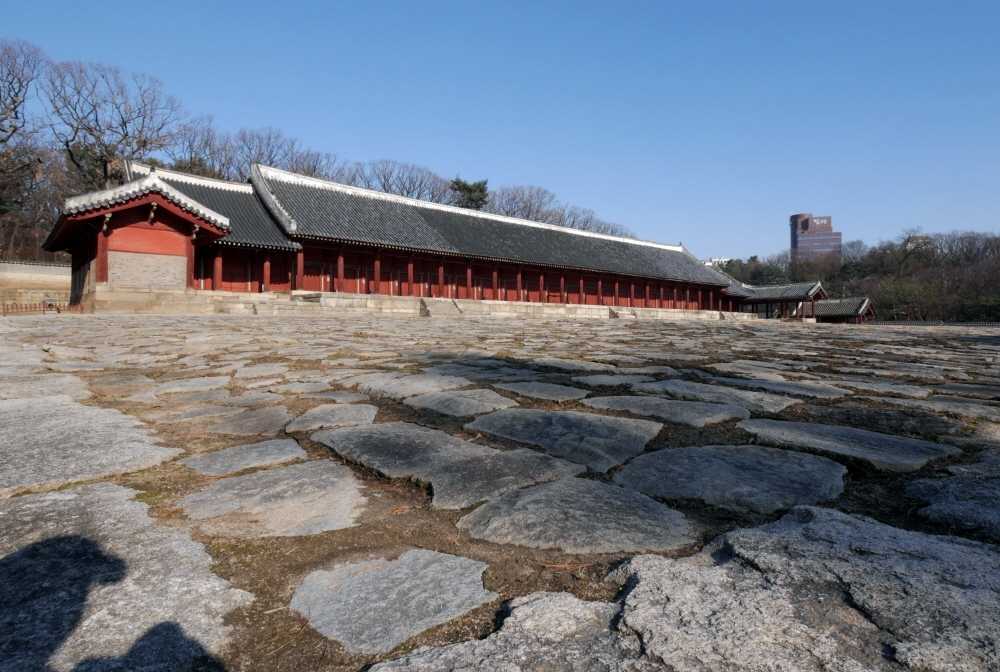Jongmyo Shrine: A Glimpse into Korea’s Royal Heritage
Jongmyo Shrine, located in the heart of Seoul, South Korea, is a place where history, culture, and tradition converge. This ancient site is not just a historical monument but a living testament to Korea’s royal past. Recognized as a UNESCO World Heritage Site, Jongmyo Shrine is renowned for its royal ancestral rituals, which have been preserved for centuries. For those interested in exploring Korea’s rich cultural heritage, Jongmyo Shrine offers a unique and insightful experience.
Understanding Jongmyo Shrine
Jongmyo Shrine is the oldest and most authentic of the Confucian royal shrines in Korea. Built in 1394 by King Taejo, the founder of the Joseon Dynasty, it was constructed to honor and perform ancestral rites for deceased kings and queens. The shrine is a serene and solemn place, surrounded by lush greenery, providing a peaceful escape from the bustling city life of Seoul.
The architecture of Jongmyo Shrine is simple yet elegant, reflecting Confucian values of modesty and respect. The main hall, Jeongjeon, is the longest wooden structure in Korea and houses the spirit tablets of the Joseon kings and queens. The layout of the shrine is designed to facilitate the performance of rituals, with various halls and courtyards that serve specific ceremonial purposes.
The Royal Ancestral Rituals
One of the most fascinating aspects of Jongmyo Shrine is the royal ancestral rituals, known as Jongmyo Jerye. These rituals are performed to honor the spirits of the royal ancestors and to seek their blessings for the prosperity of the nation. The rituals are conducted with great precision and involve a series of offerings, music, and dance.
Jongmyo Jerye is held annually on the first Sunday of May and is a significant cultural event in Korea. The rituals are accompanied by Jongmyo Jeryeak, traditional court music that has been passed down through generations. This music, along with the ceremonial dances, creates a mystical and reverent atmosphere, transporting visitors back to the time of the Joseon Dynasty.
The preservation of these rituals is a testament to Korea’s commitment to maintaining its cultural heritage. In 2001, Jongmyo Jerye and Jongmyo Jeryeak were inscribed on UNESCO’s Intangible Cultural Heritage list, highlighting their cultural significance and the need for their protection.
Visiting Jongmyo Shrine
For those planning to visit Jongmyo Shrine, there are a few practical tips to keep in mind. The shrine is open to the public, but guided tours are required to preserve the sanctity of the site. Tours are available in multiple languages, including English, and provide valuable insights into the history and significance of the shrine.
Visitors should dress modestly and be respectful of the rituals and ceremonies that may be taking place during their visit. Photography is allowed in certain areas, but it is important to follow the guidelines provided by the tour guides.
The best time to visit Jongmyo Shrine is during the annual Jongmyo Jerye, as it offers a rare opportunity to witness the royal ancestral rituals in person. However, the shrine is a beautiful and tranquil place to visit year-round, offering a glimpse into Korea’s royal history and cultural traditions.
In addition to Jongmyo Shrine, visitors can explore nearby attractions such as Changdeokgung Palace and the vibrant Insadong district, making for a culturally enriching day in Seoul.
